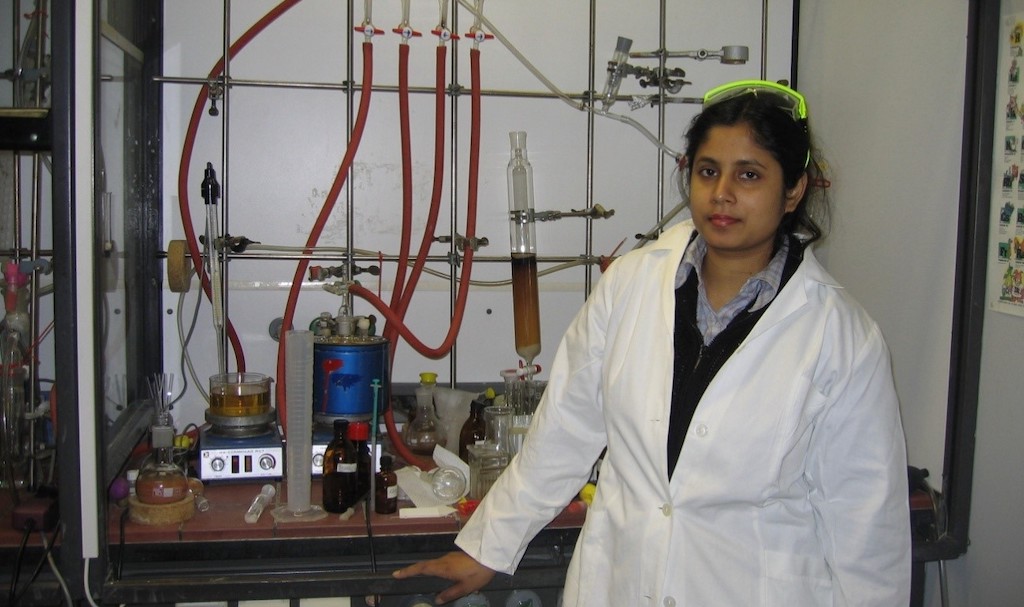[ad_1]
Dr. Jyotirmayee Dash
Professor
Indian Association for the Cultivation of Science
India

AsianScientist (May. 4, 2021) – Almost every cell in our body holds the same DNA that details everything from the color of our hair to the size of our feet. Just like an instruction manual, this six billion-letter code dictates how each cell multiplies and functions. However, certain pages in the manual can be more relevant than others.
This is where genetic switches come in: by activating or deactivating the right genes within a cell, genetic switches direct gene expression and allow cells to serve their intended purpose within muscles, organs and so much more. Whether genes are on or off impacts more than just our outer appearances, it also influences how susceptible we are to developing diseases.
Dr. Jyotirmayee Dash of the Indian Association for the Cultivation of Science is looking to fight diseases at their source by synthesizing molecules that bind to genetic switches and triggering them to switch off genes known to be present in patients with cancer, diabetes and neurological disorders.
In particular, Dash’s lab is interested in G-quadruplexes: four-stranded DNA structures found in the human genome and within the cancer-related gene c-MYC. In her quest to fight cancer, Dash synthesized a molecule that binds with the G-quadruplex and switches off the c-MYC gene—killing cultured cancer cells in the process
For her efforts, Dash was recently awarded the Shanti Swarup Bhatnagar Prize, India’s highest science award. Talking to Asian Scientist Magazine, Dash shares her goals for her research as well as the inspiration behind her work.
- How would you summarize your research in a tweet?
Organic chemistry tools to understand the structure and function of nucleic acids.
- Describe a completed research project that you are proudest of.
Similar to natural selection, we used DNA and RNA targets to select and synthesize their own binding molecules. We immobilized the G-quadruplex DNA secondary structure on gold-coated magnetic nanoparticles and allowed it to mix with a pool of chemicals containing complementary reactive fragments. G-quadruplex itself selects the reactive fragments and synthesizes the compounds that selectively bind and recognize it.
This method can be considered a marriage of chemistry and biology in the presence of nanomaterials. With this approach, a selective molecule is developed and binds with a G-quadruplex to switch off the c-MYC gene that is over-expressed in breast, colon and lung cancer. The molecule selectively kills the cancer cells, without doing any harm to the normal cells.
- What do you hope to accomplish with your research in the next decade?
My research program integrates organic chemistry with biology to address problems related to human health. We design molecules with the desired topology for targeting biologically important targets and modulating important cellular functions. We aim to develop new and cost-effective molecular therapies and molecular probes. Our research could provide a foundation for translational research and commercialization.
- Who (or what) motivated you to go into your field of study?
As a child, I was always fascinated by the wonders of nature and eager to try new things. I also had a strong passion for science. I saw chemistry as a central science that is also creative and can be explored alongside other scientific disciplines. I chose to pursue chemistry and throughout my undergraduate studies, Masters studies, PhD and postdoctoral research, my supervisors and their dedication to research continually inspired me.
- What is the biggest adversity that you experienced in your research?
I believe in transforming adversities into opportunities. The problems that I come across help me grow and move forward. There have been hardships in my scientific journey, but I have embraced and overcome them.
- What are the biggest challenges facing the academic research community today, and how can we fix them?
I think transforming research output in the laboratory into commercial applications for the benefit of mankind is one of the biggest challenges today. Bridging the gap between various research disciplines and between academia and industry through collaborative research could lead to the development of cost-effective materials and practical scientific tools.
- If you had not become a scientist, what would you have become instead?
I would have chosen to be a writer or a schoolteacher. In both ways, I would be involved in reading, writing and teaching.
- What do you do outside of work to relax? Do you have any interests and hobbies?
Outside research, I have a keen interest in Indian classical music, particularly songs composed by Rabindranath Tagore. I also love to spend my leisure time with my family.
- If you had the power and resources to eradicate any world problem using your research, which one would you solve?
I work in the area of nucleic acids and study their structure and function. Nucleic acid research is directly related to the wellbeing of mankind and the entire living world. Modifying and targeting nucleic acids can potentially cure ailments like cancer and neurodegenerative disorders. Antimicrobial agents can be developed by specifically targeting the nucleic acids of microbes. If I had the power and resources, I would try to eradicate ailments like cancer and infectious diseases through the development of potential cures.
- What advice would you give to aspiring researchers in Asia?
The more we explore in research, the more potential we have for producing beneficial outputs. We should keep doing our best to become leaders of tomorrow.

This article is from a monthly series called Asia’s Rising Scientists. Click here to read other articles in the series.
———
Copyright: Asian Scientist Magazine; Illustration: Oikeat Lam/Asian Scientist Magazine.
Disclaimer: This article does not necessarily reflect the views of AsianScientist or its staff.
[ad_2]
Source link